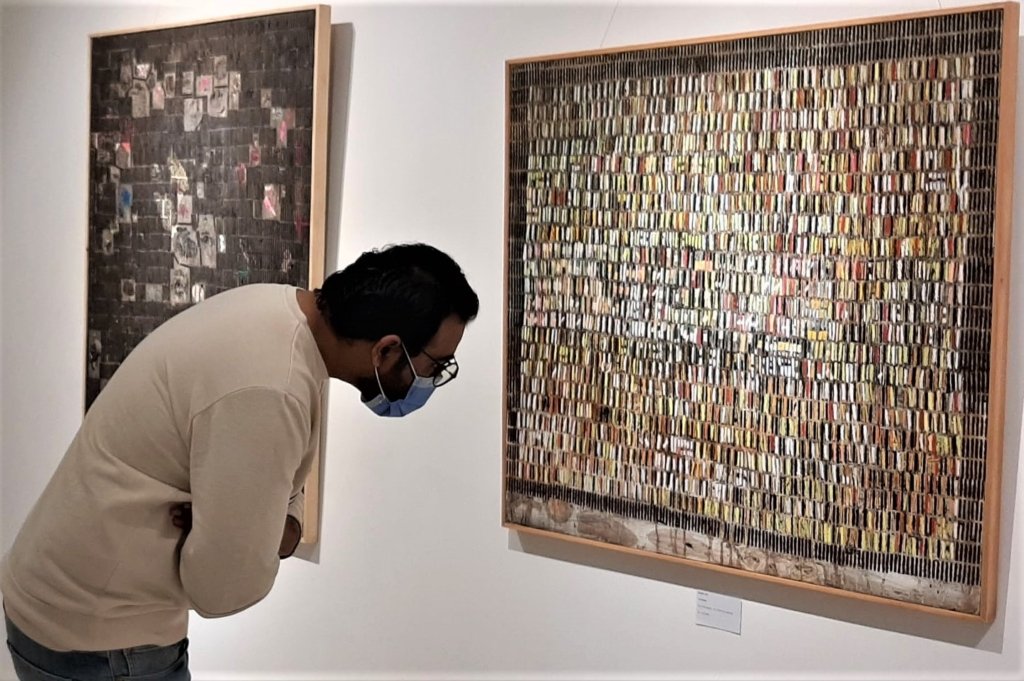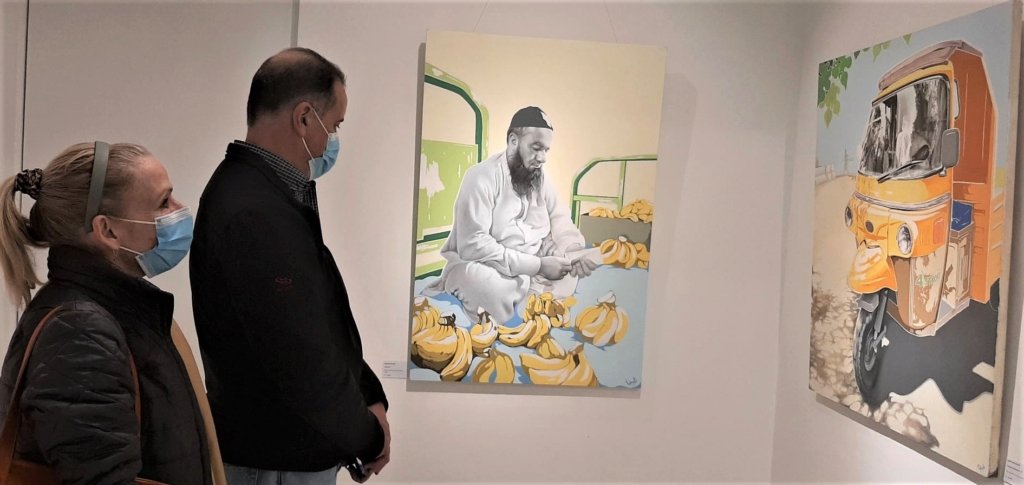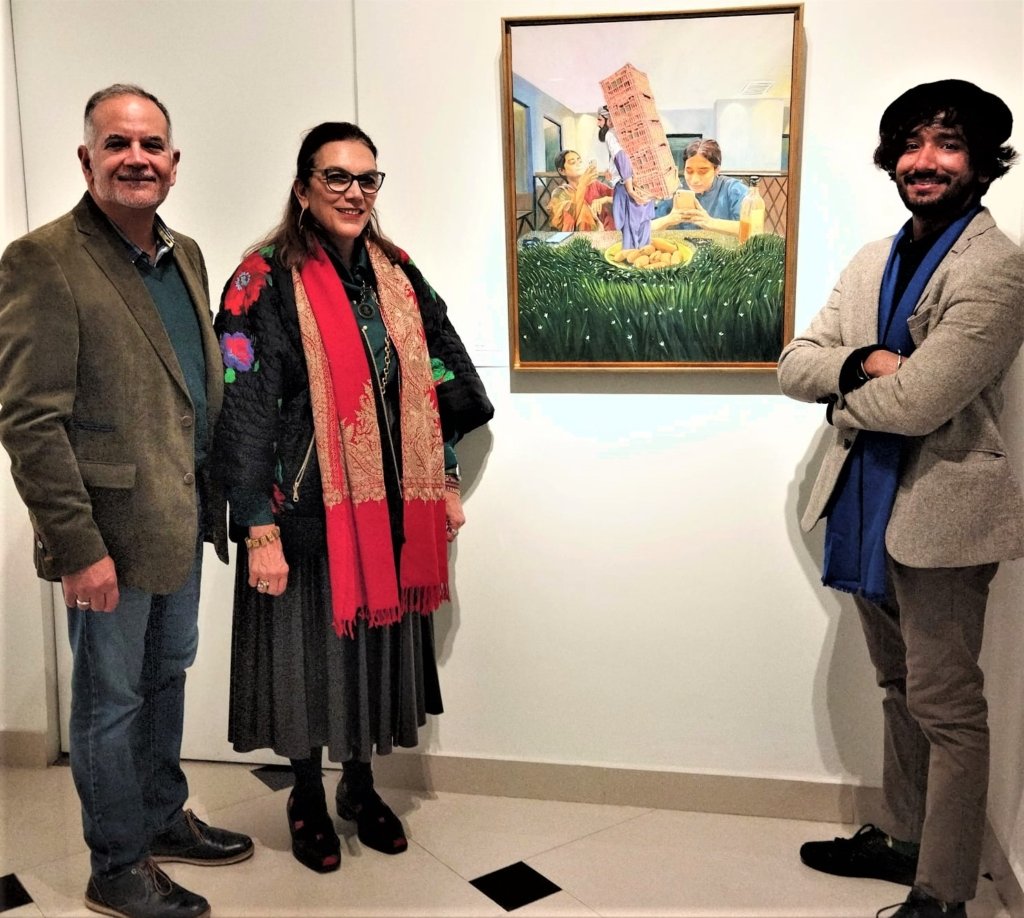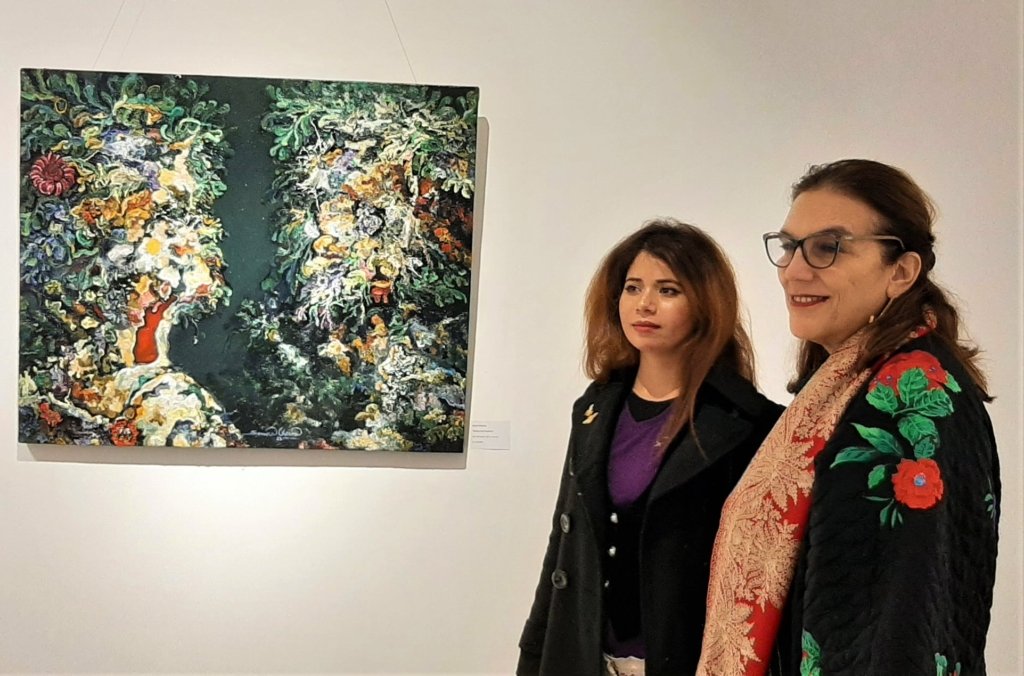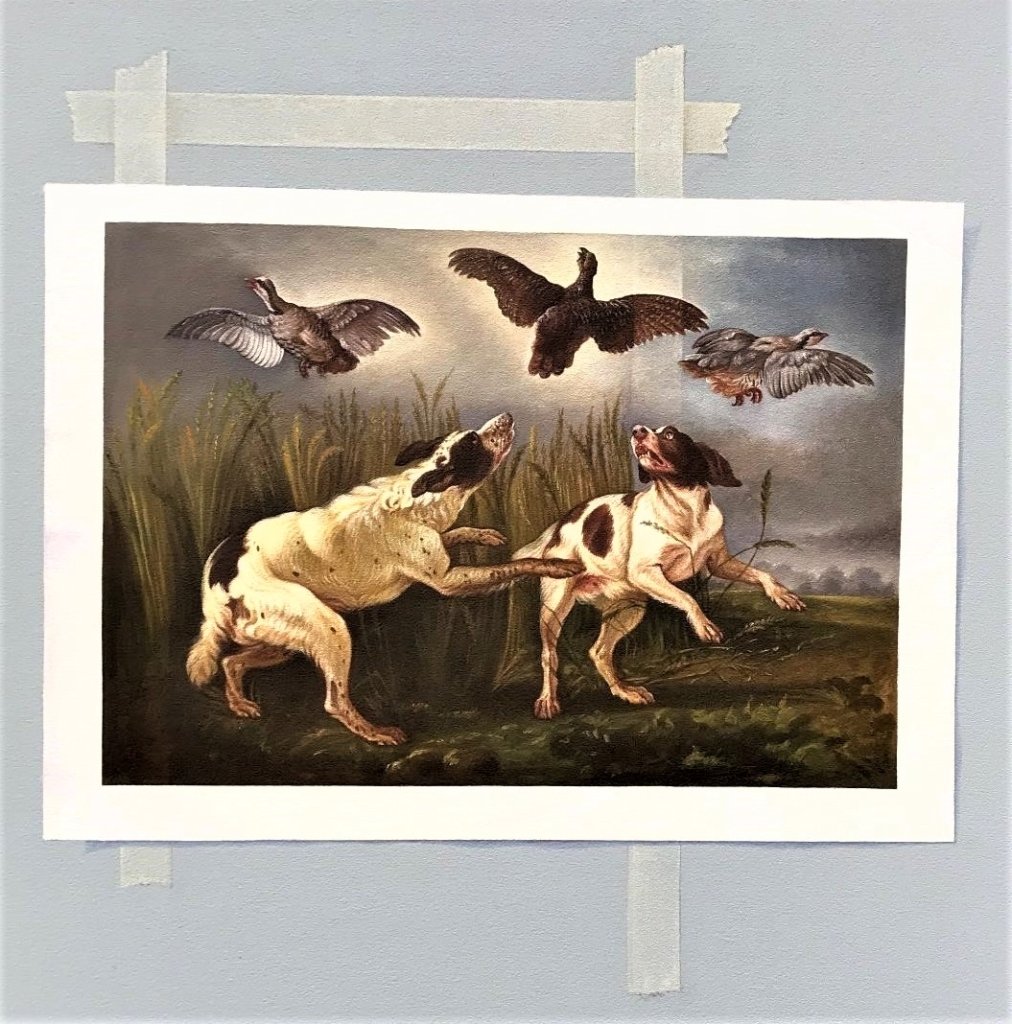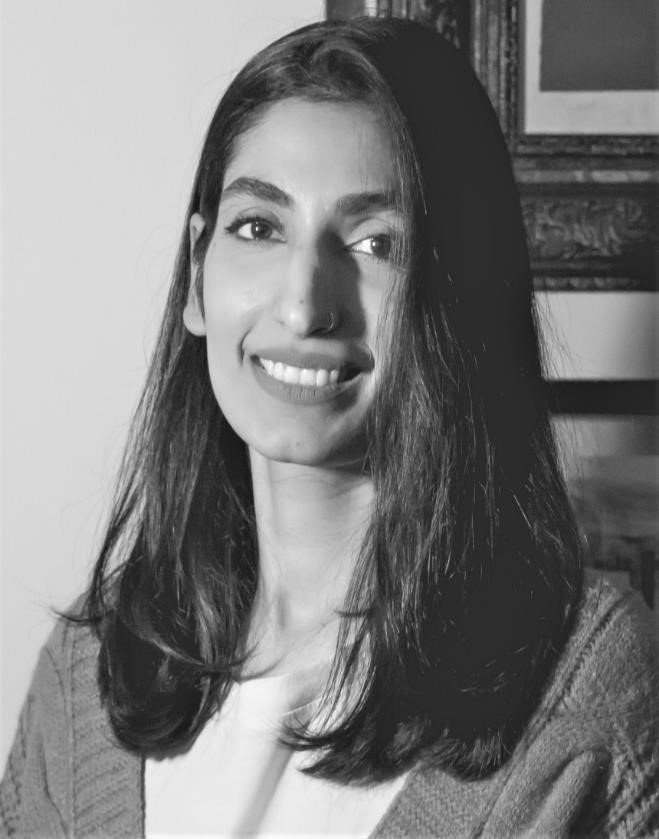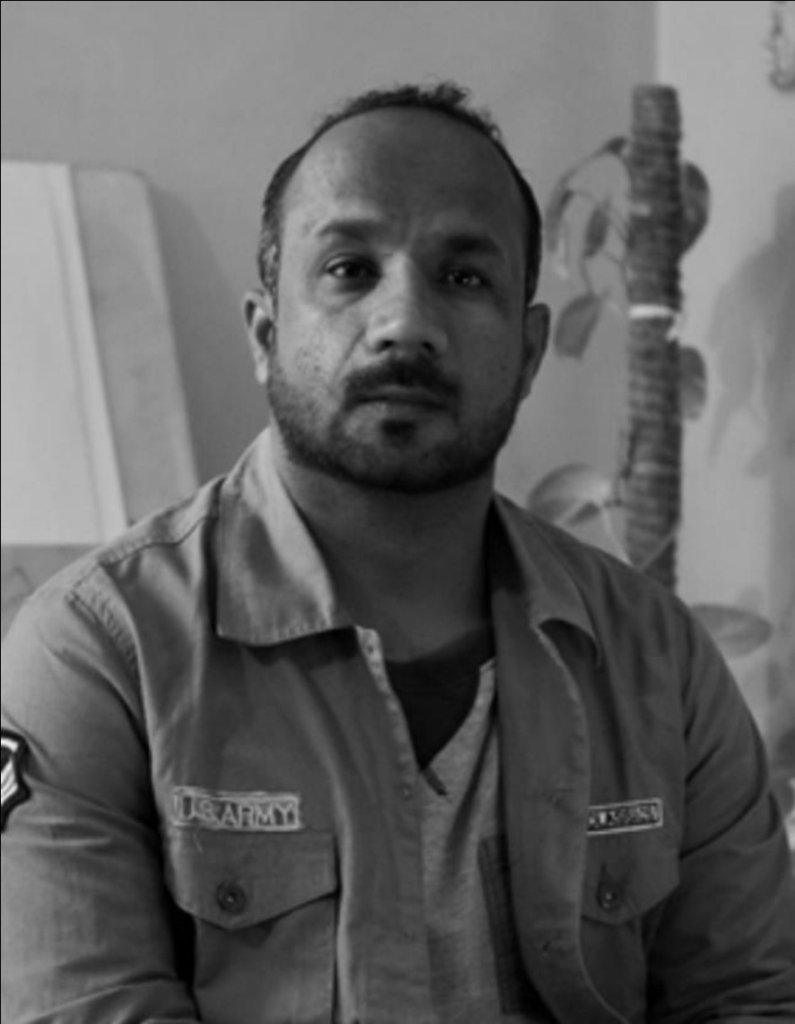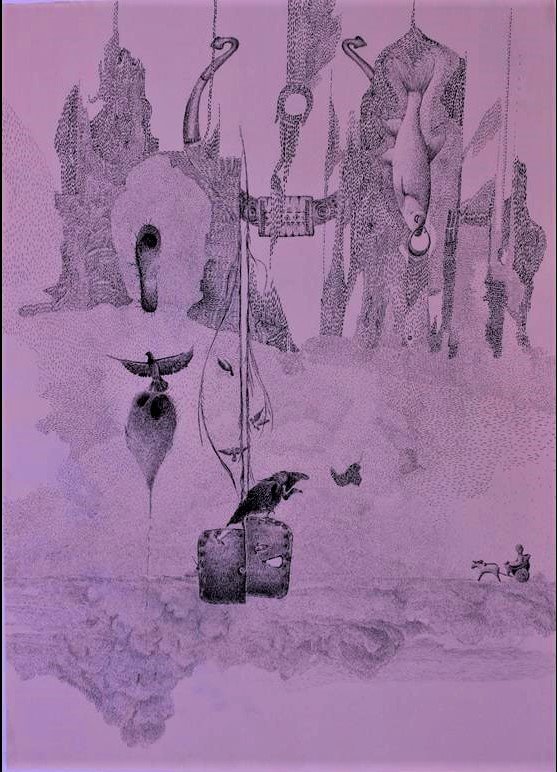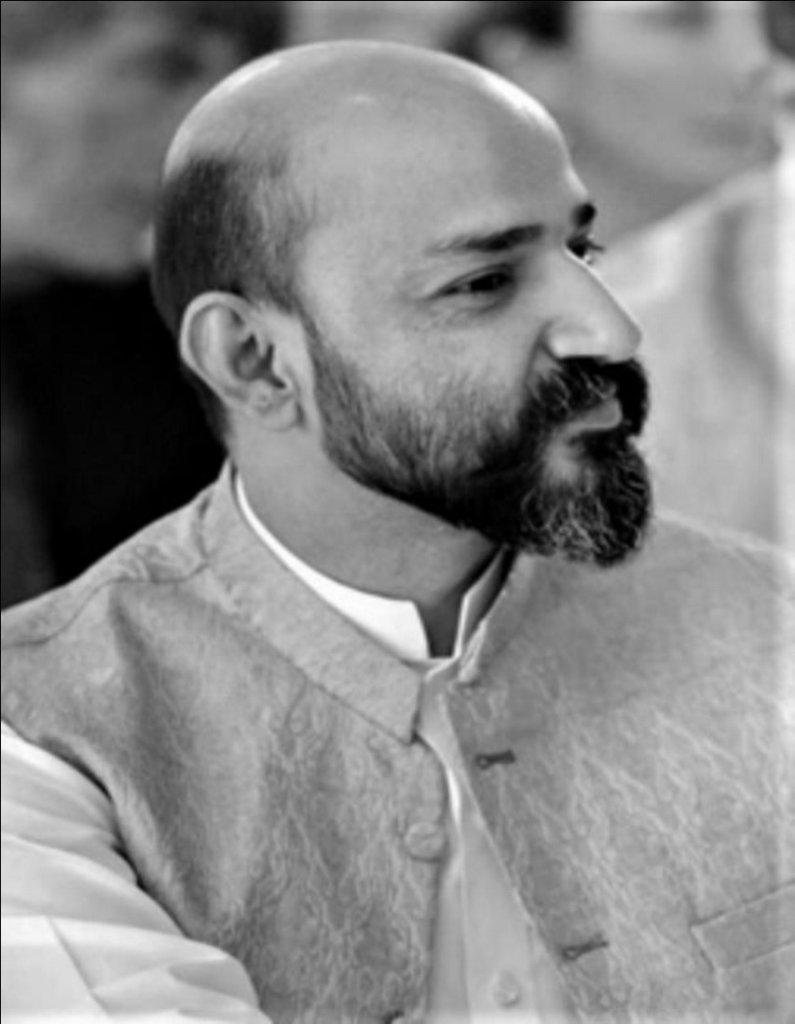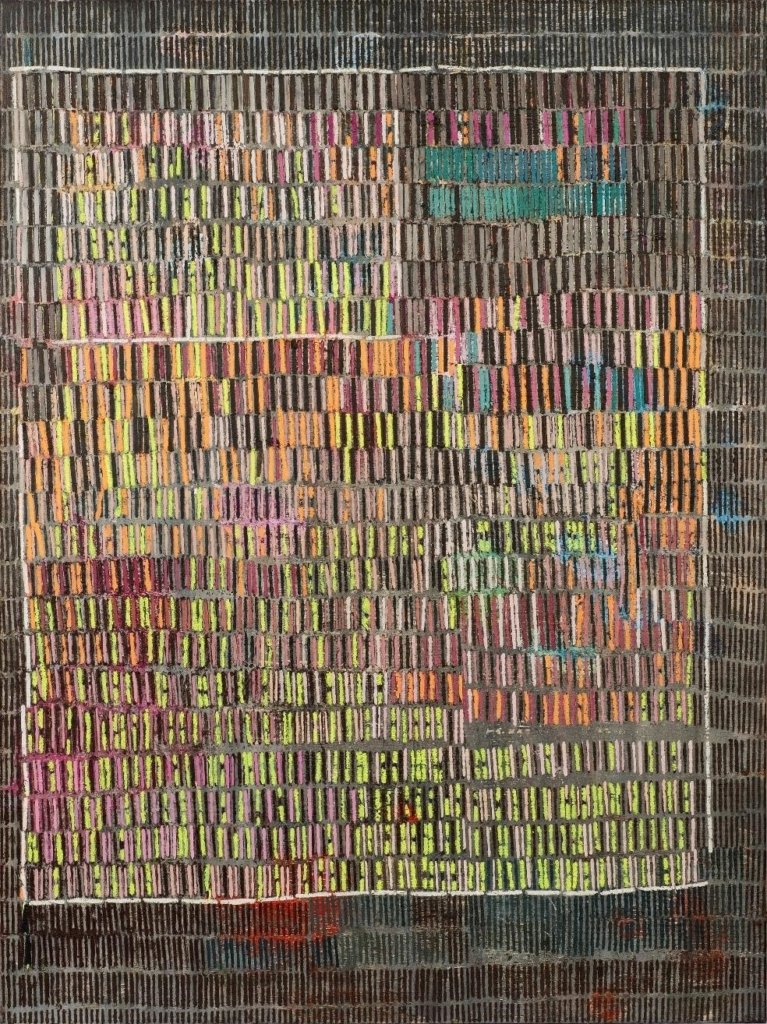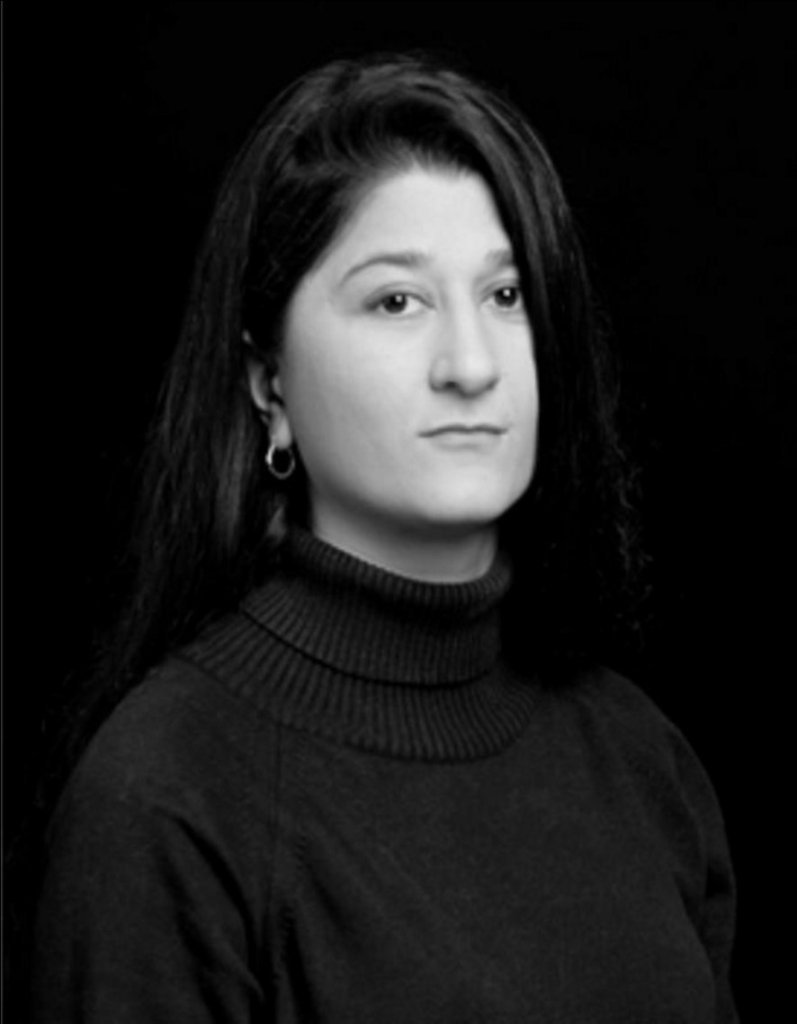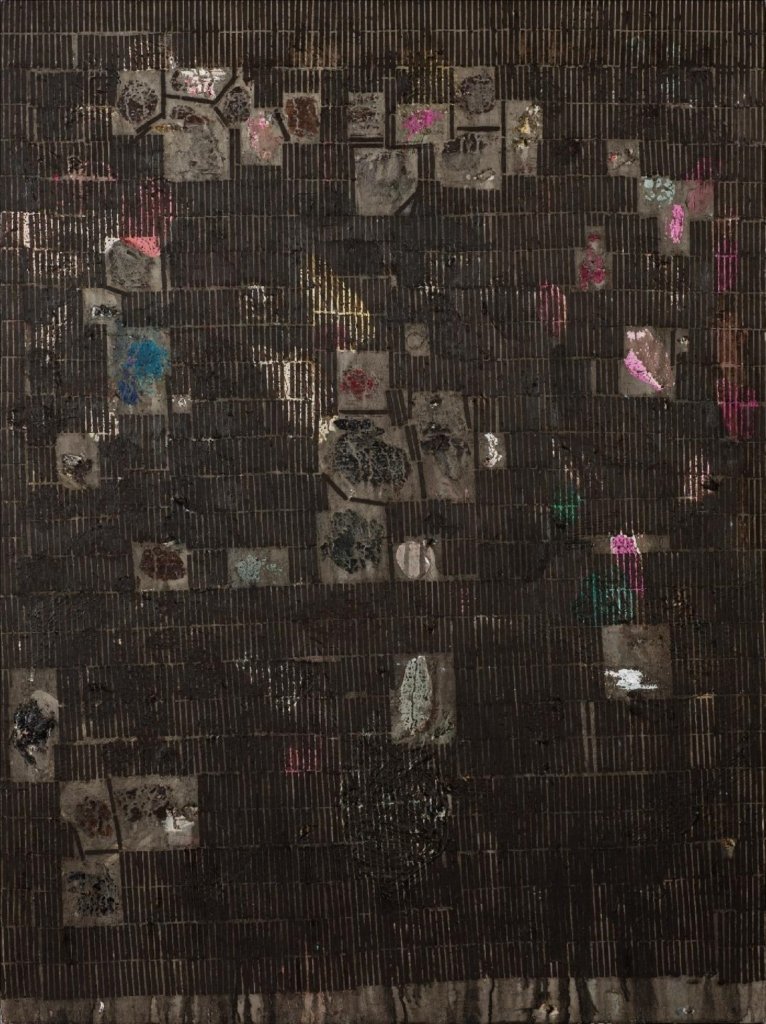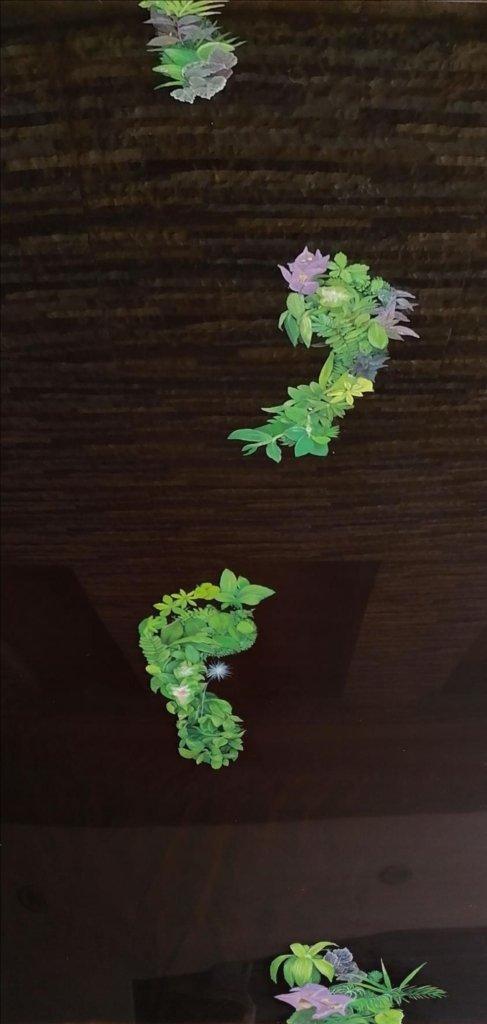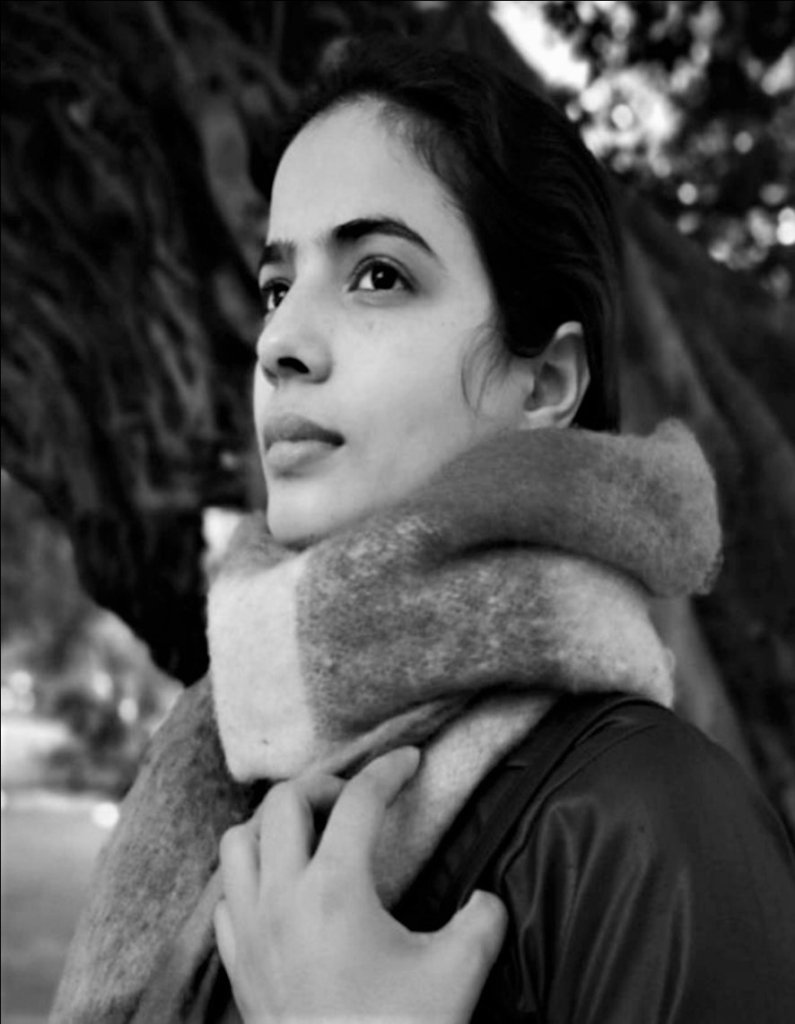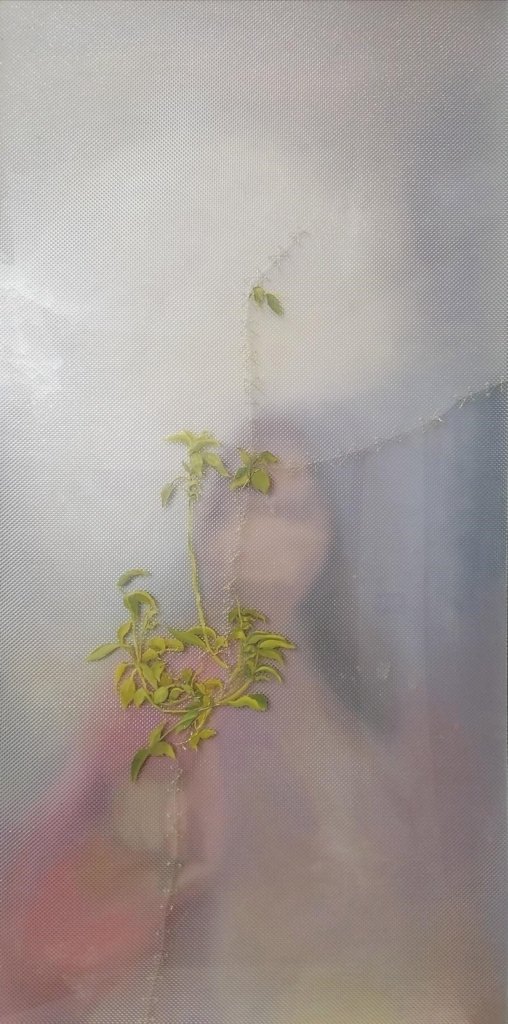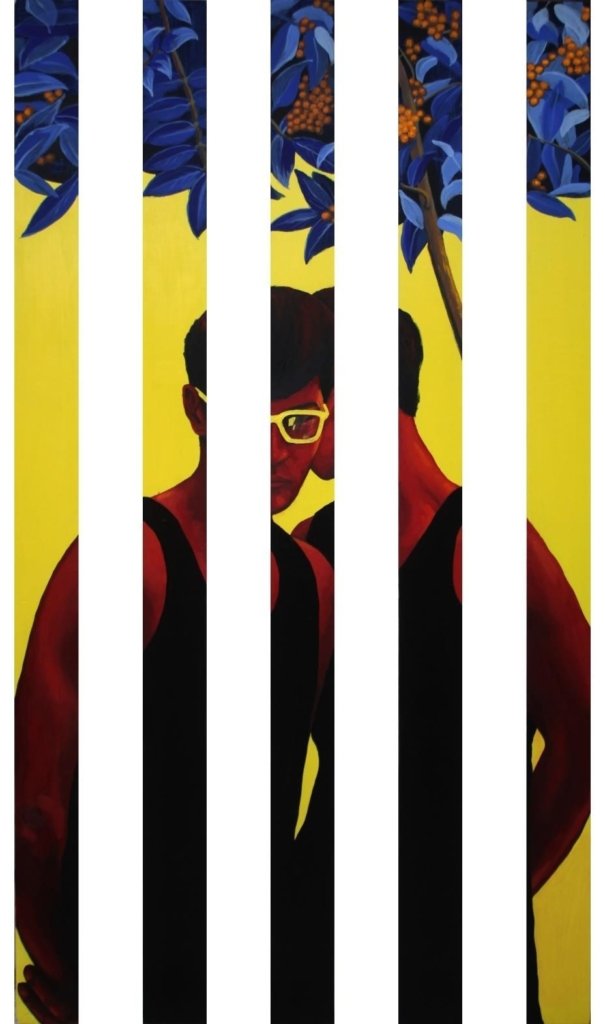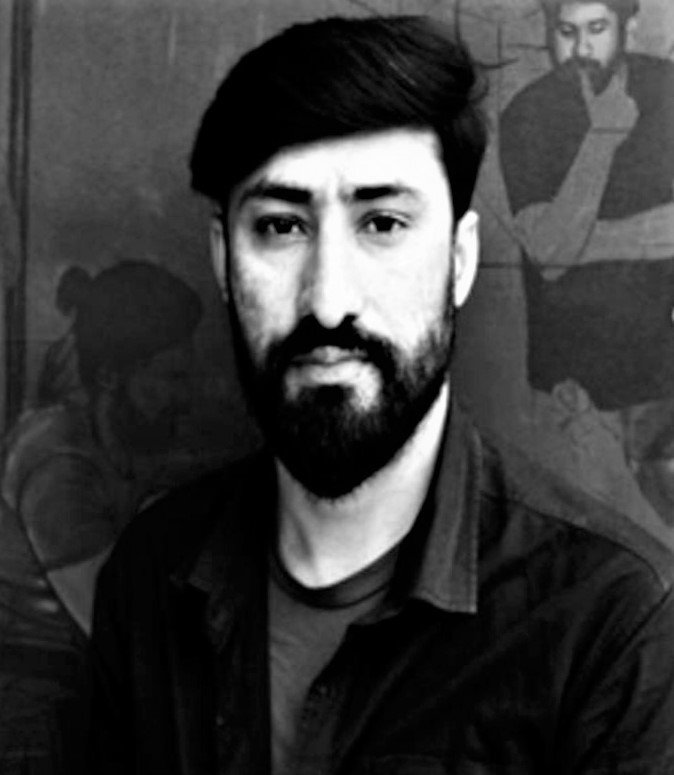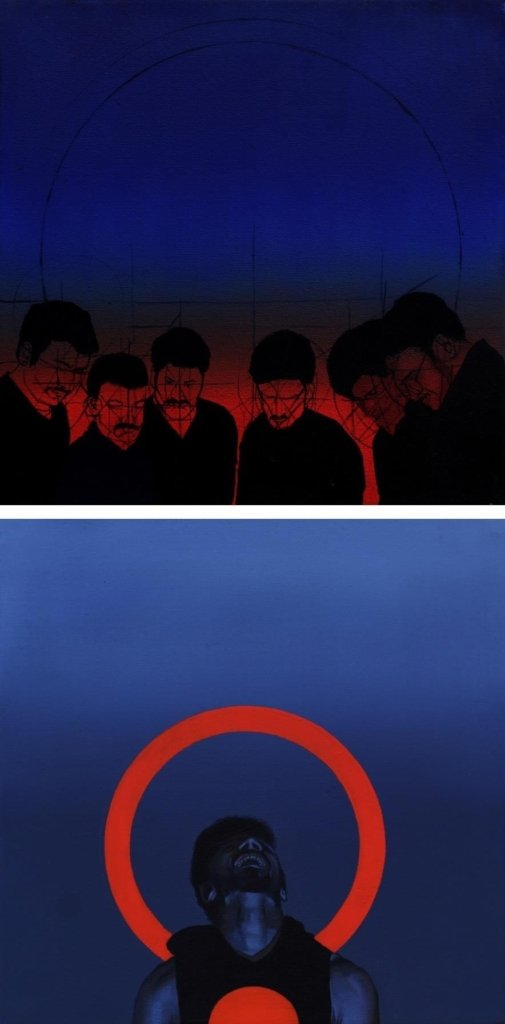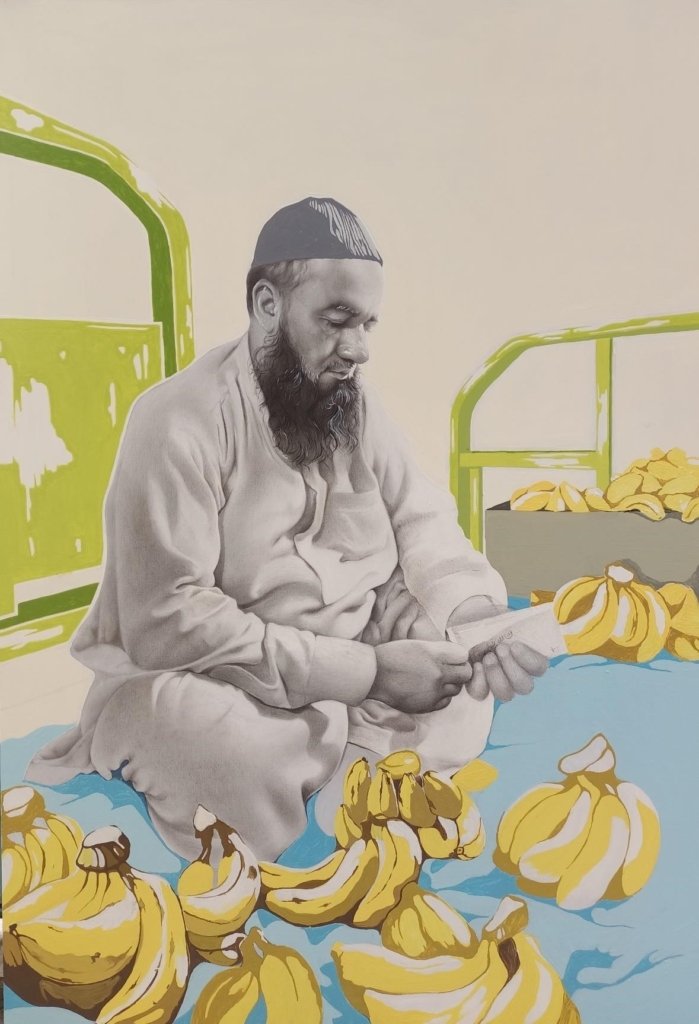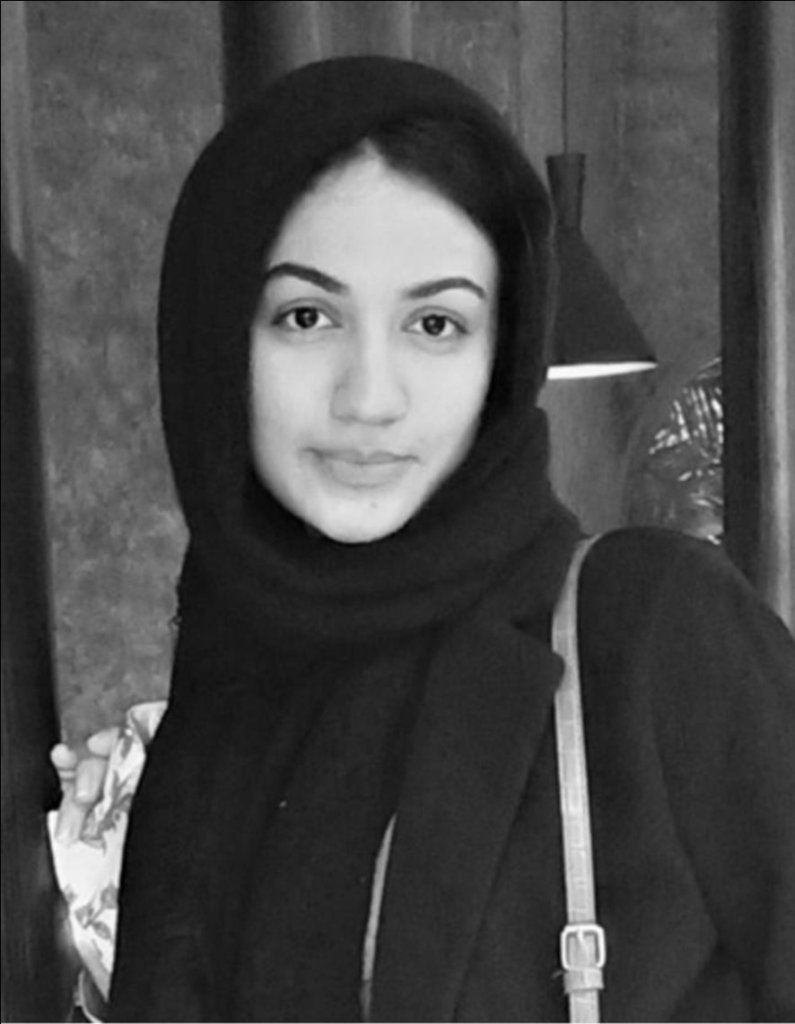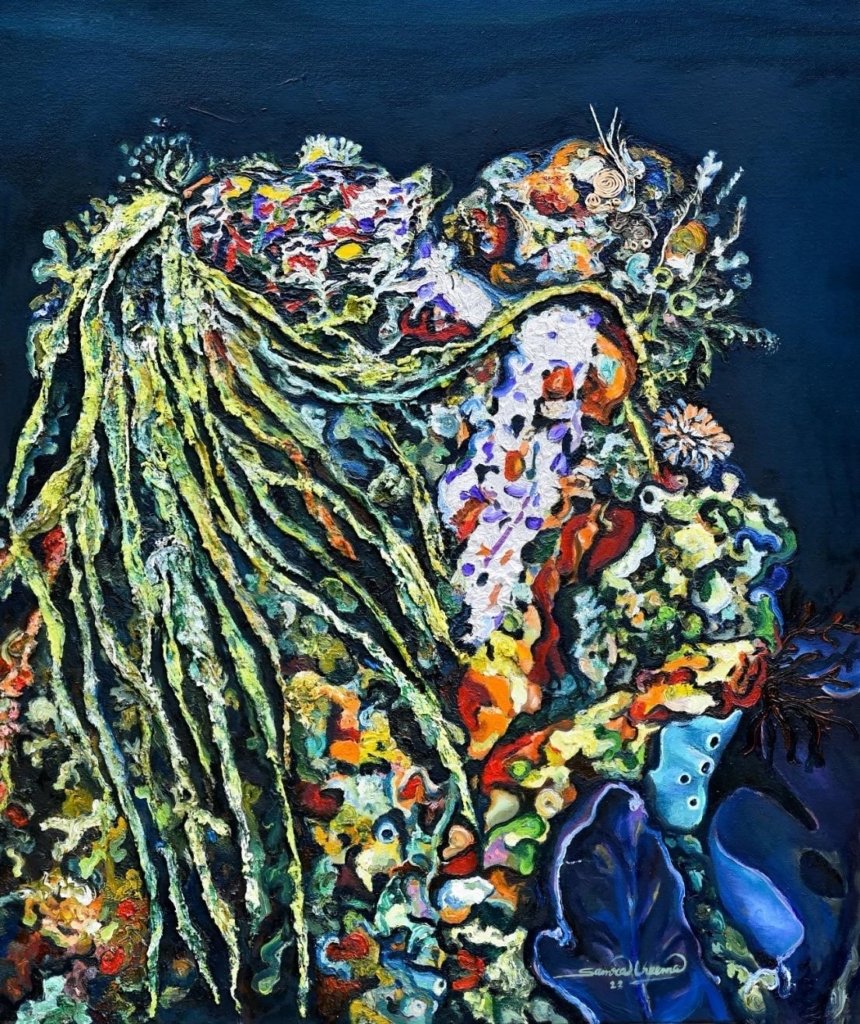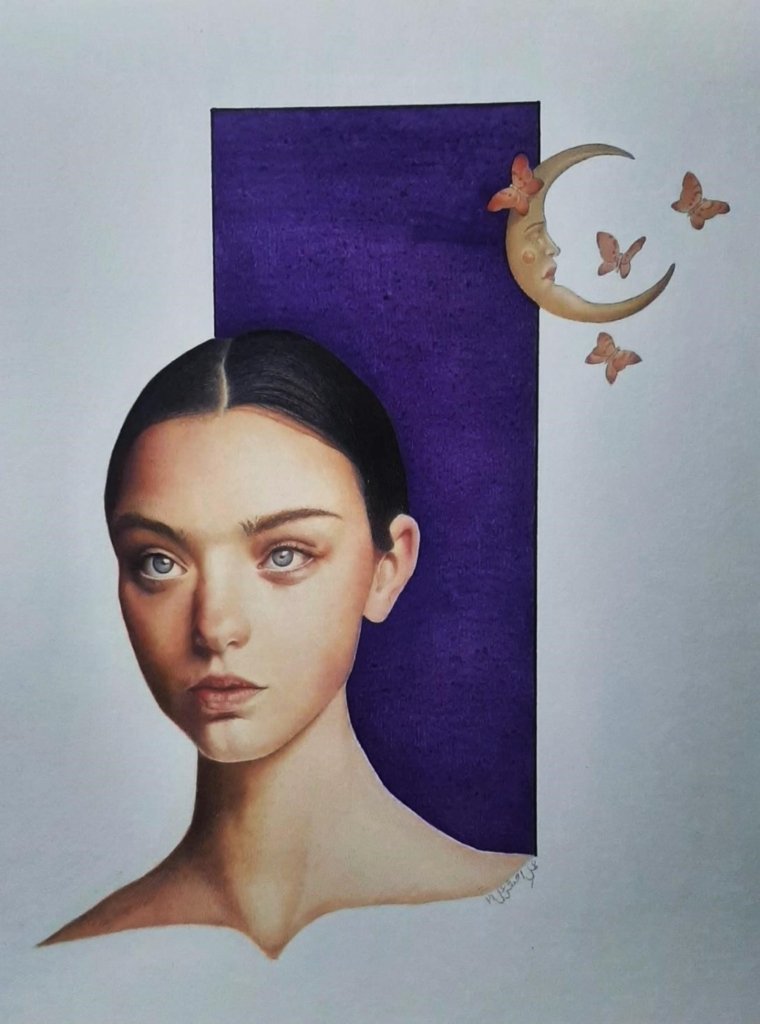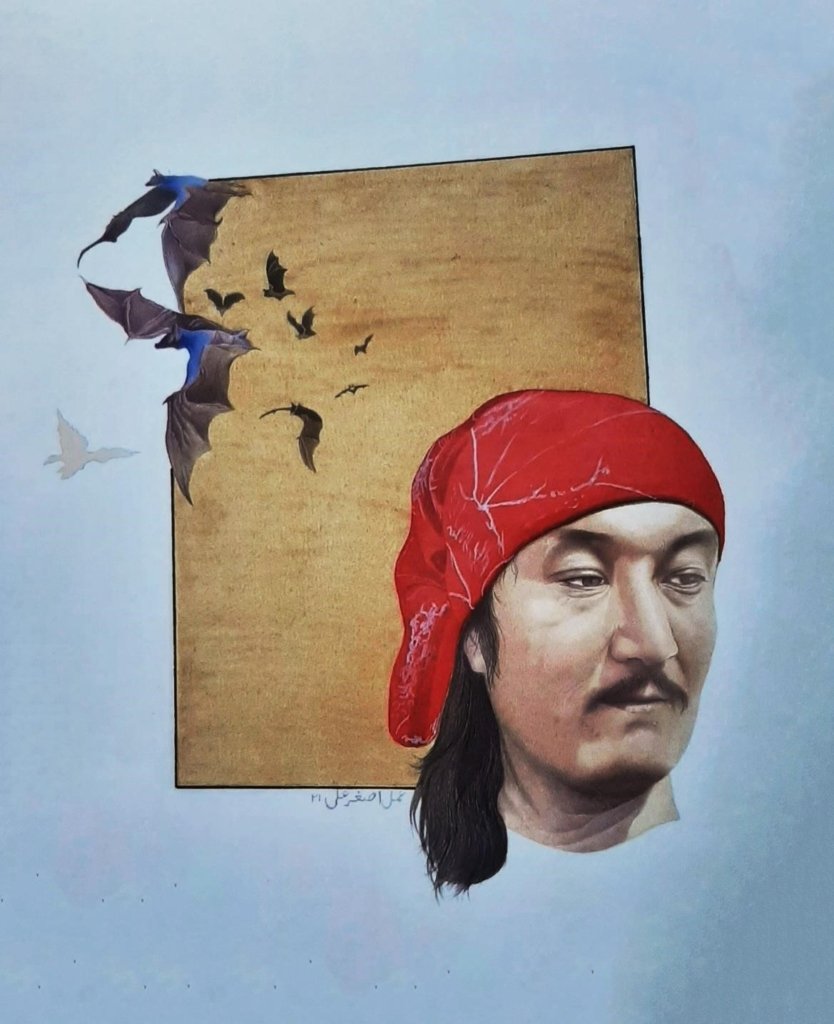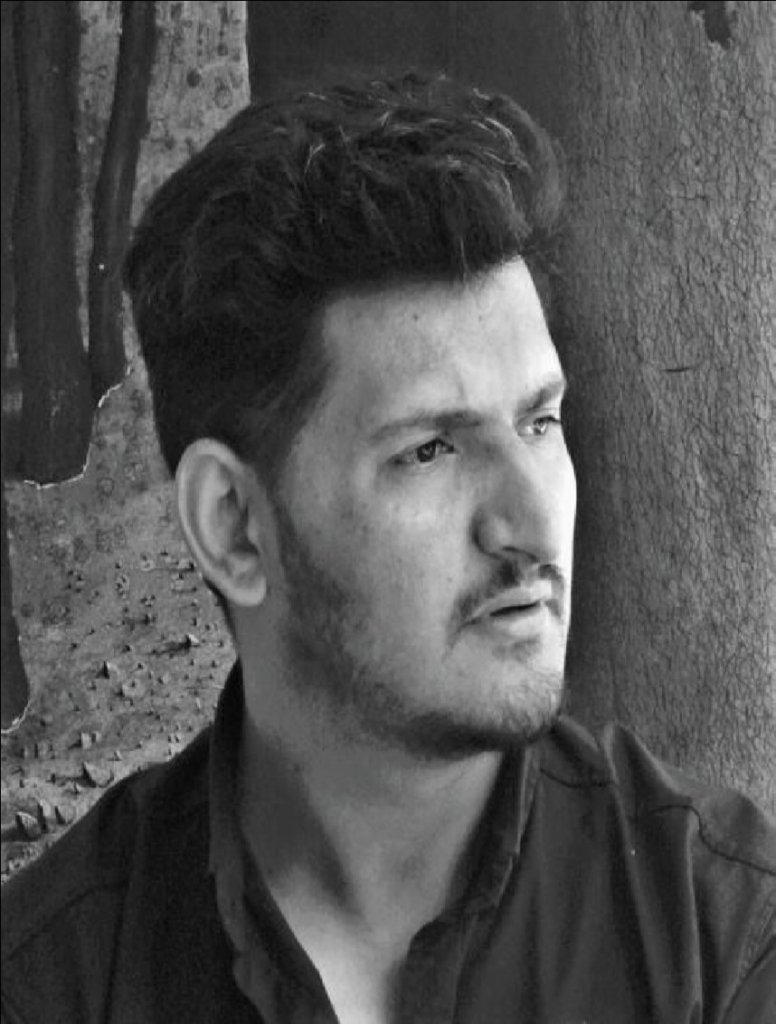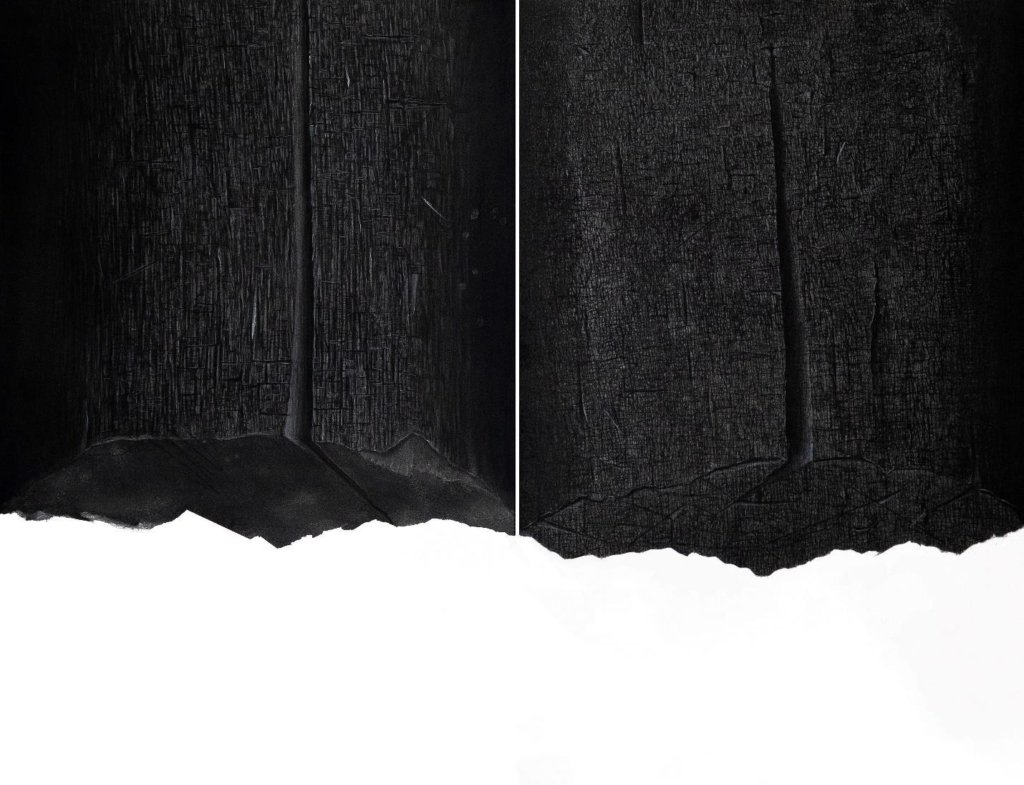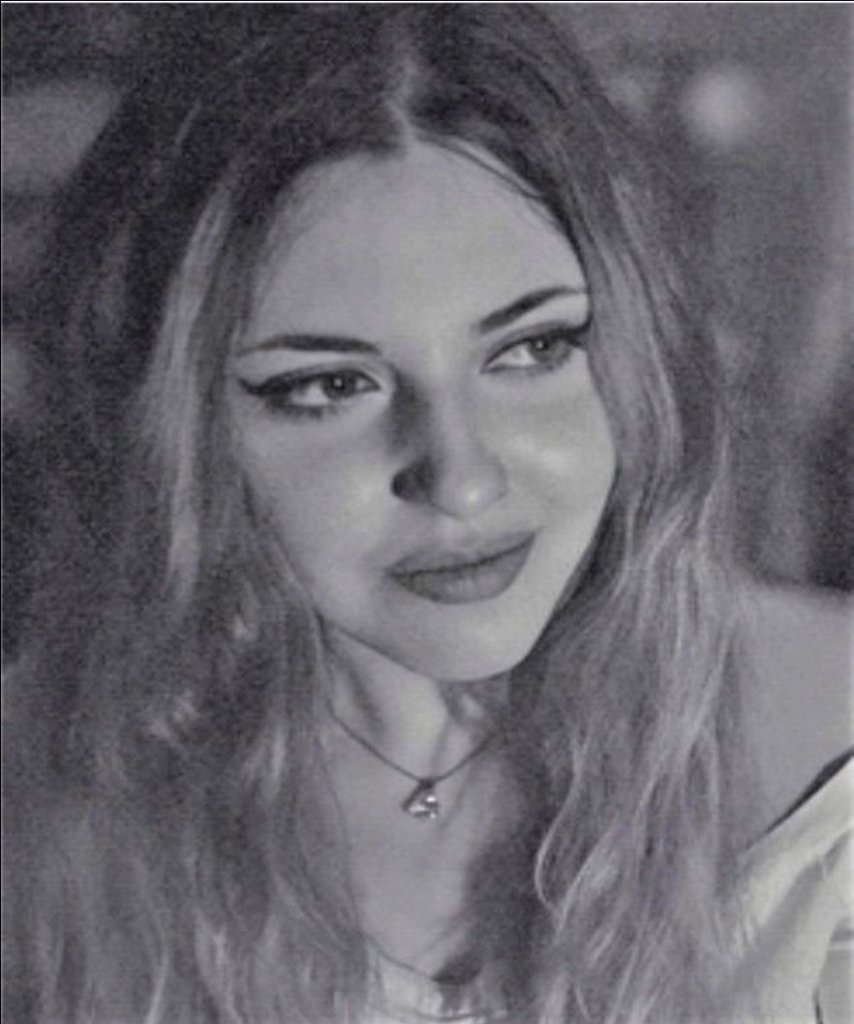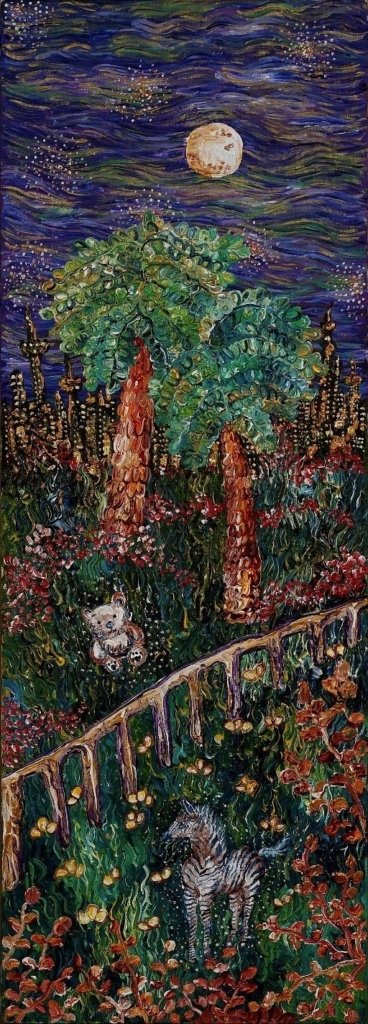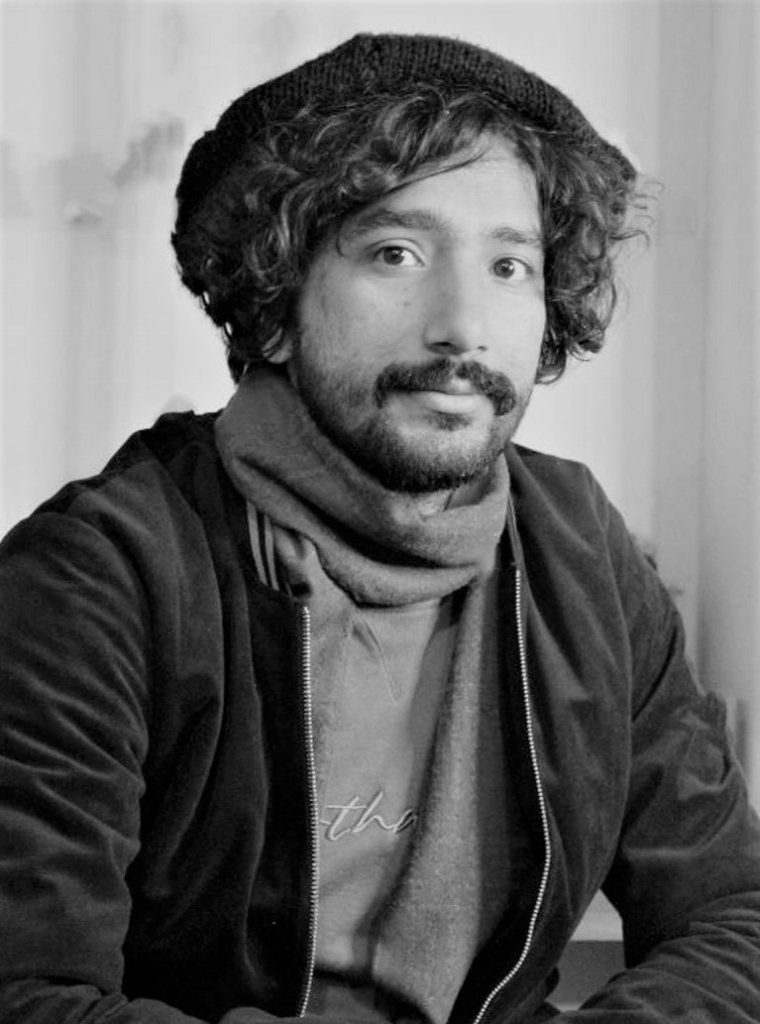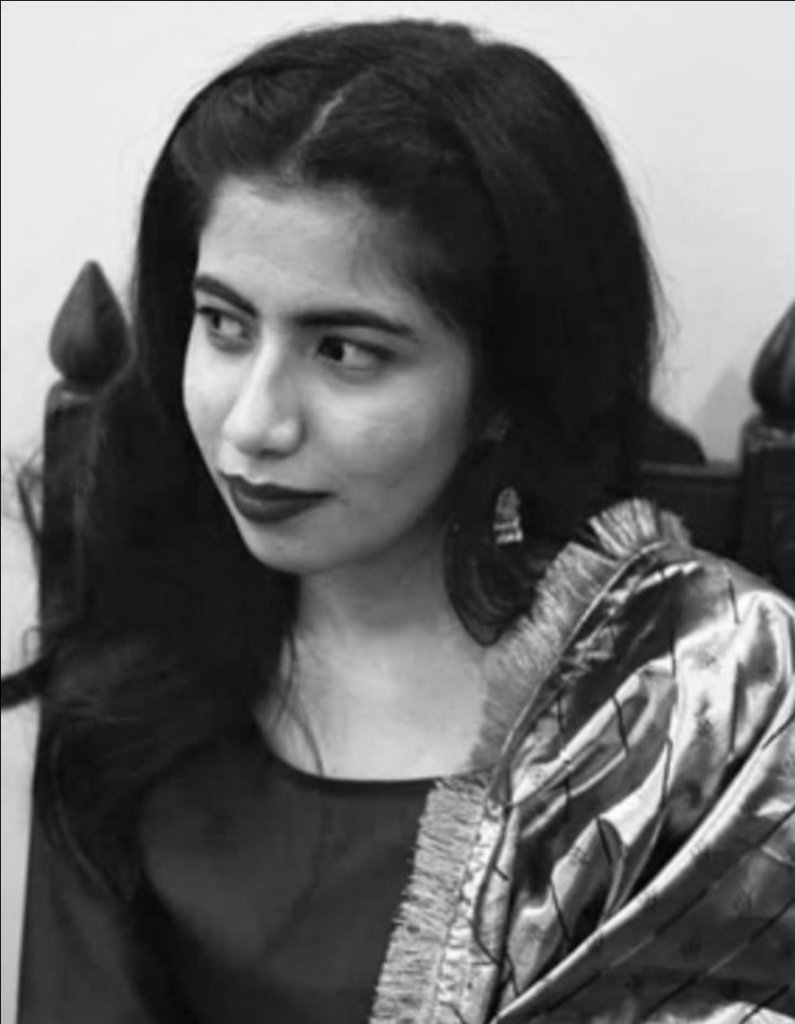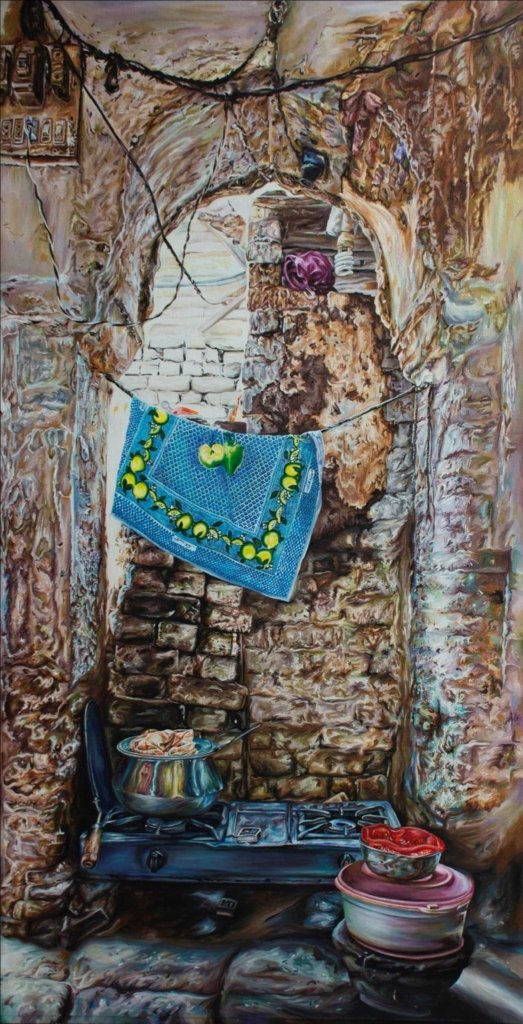Islamabad: An exhibition of artworks by award-winning artists highlighting contemporary social, political, and ecological issues concluded on Thursday (January 27).

The exquisite works of 14 artists done in diverse media on a variety of themes, imagery, techniques and compositions received the accolade from art connoisseurs, members of the diplomatic community and critics.
The European Union Ambassador in Pakistan Androulla Kaminara, “an ardent supporter of art, especially of the emerging artists”, who opened the show on January 21, was all praise for the artists, their creativity, imagination, treatment of subjects and the curator.
“It’s very difficult to judge the artworks as there are different ways of looking at things and different ways of representing their imaginations,” she said in her brief remarks.
“Every single art is stunning and I congratulate the participating artists and the gallery for organising the event and instituting the award as a reward is important to acknowledge and encourage people”, Ms Kaminara said.
Pakistan has a huge talent that has not been understood well in Western countries. I am trying to discover the talent and diversity of Pakistani culture which are not much known in Europe.
“It was wonderful to curate a show of the emerging artists who have won the national biennale Arjumand Painting Awards from 2015 till now,” commented Dr Faisel Arjumand, the founder of the award and curator of the show.
He was quite optimistic about the future of art and artist. “These talented artists will be leading the art scene of Pakistan in future.”

“It’s a pure joy for me to be among these quality paintings,” he added.
About the background of the award, Dr Arjumand said in 2015, Gallery 6, launched the national biennale “Arjumand Painting Award”, perhaps the first-ever initiative by any private gallery, which presents substantial cash prizes to recognize emerging artists who possess distinguished talent in painting.
Since its establishment in 2008, the gallery has organized over 100 national and five international exhibitions in Australia, India and USA.
In the four nationwide competitions held so far, 21 artists between the ages of 25 to 40 have won prizes in different categories.
In this exhibition works of 14 out of 21 artists had been on display.
Kiran Saleem, who won the first prize in 2015, focuses mainly on the truth behind common happenings. She recreates images initially painted some centuries ago but relates them to contemporary situations.
Her latest body of work is a commentary on our current socio-political scenario, using the dog as a symbol from a historic painting.
She believes that relationships among humans often turn into a bond of power and slavery.
“The domestic keeps are often voiceless, rightless and identity-less, just like pets and their sole duty is to please, listen and obey their master’s command. This power structure can be seen in the world of politics, gender, economy and other fields of life.
She has portrayed this power equation in her painting “A Deal of Power”, in oil and acrylic in a subtle way.
Saba Zahid’s painting ‘Me & Her (diptych), in oil on wood won second prize in 2015. Ms Zahid’s paintings discuss the image of a woman in today’s world, her identity and how culture and traditions have moulded it, irrespective of the timeline and status. She paints the reality of a woman’s life and her being as skillfully depicted in the diptych with women in burqa and gajray.
Zakir Baloch’s art revolves around ordinary objects that have numerous visual possibilities. The merit prize winner of 2015 artist works with a variety of materials drawing and making different visuals out of them. The two artworks (diptych) in archival pen on paper that were on display invites the viewer towards an open-ended interpretation.
Irfan Gul Dahri is the winner of first prize in 2017. A recipient of the Chughtai award and Charles Wallace Visiting Artist Fellowship, his current series such as ‘Paradise and Other Fairy Tales’ depicts characters commonly found in folk literature. Folktales with characters of hybrid nature possessing human and non-human attributes living in far-away lands of magic which makes them strangely attractive for kids’ wild world of imagination.
“From Egyptian, Greek and Hindu mythologies to ‘Tom and Jerry’ and emojis, human beings have been living this parallel reality through creative imagination since time immemorial,” as he put it.
Mr Dahri anthropomorphizes the ideas and stories dwelling between the realm of perceived existence and fantasy.
Naqsh Raj, an abstract expressionist artist, was the winner of the third prize in 2017. Her latest work of symbolism of imagery such as ‘Synthetic Emotion’ and ‘A Unique Moment’ in oil, ink and chalk is a combination of mechanical and manual methods. She repeats a mundane technique for imprint making with human hands.
“Possessing a space through relentless exertion has been her prime interest and embracing imperfection is a natural part of her current art practice”, commented Dr Arjumand.
Bushra Khalid through her current artworks wants to inculcate empathy and awareness in people towards the planet earth which is facing catastrophic consequences of climate change. She wants to contribute to saving the earth by creating awareness and counter ignorance by conversing with people through art as depicted in her two pieces in oils and on two acrylic sheets.
The winner of the merit prize in 2017 believes that though a lot of organizations and people are working for the cause it seems a race against time as the destruction of nature is winning the race.
Ms Khalid wants to create a sense of responsibility among the people to contribute to helping Mother Nature to heal.
Javaid Iqbal Mughal’s work explores silent conversations between men in a patriarchal society and studies the unbalanced nature of hierarchy among them. In his opinion, these hierarchies need to be questioned but have become accepted norms in our society.
The winner of the merit prize in 2017 and third prize in 2019, Mr Mughal “unpacks these muted conversations by using facial expressions and hand gestures, which are masculine and even aggressive at times,” the curator commented.
Compositional elements such as chiaroscuro are dominant in his two works ‘Argument’ (polyptych) in oil on MDF strips and ‘Victorious’. He employs forms that appear obscured or unrevealed to heighten the mystery and sinister mood.
Paintings of Syeda Unab Sumble, the winner of the first prize in 2019, focus on ordinary people around us who contribute significantly to our lives in subtle ways but remain unnoticed. Ms Sumble can execute her vision with immaculate precision, said the curator.
“We often do not think or pay attention to them, yet, every single day, with muted tones of their own, they add beaming colours to the society’s canvas,” stated the artist.
Ms Sumble’s attention to details, blended with the diligent colour schemes and hyperrealism, is enough to grab the audience’s attention, leaving them in awe as in ‘Rozi Roti’.
Samra Cheema paints directly from the tube or dry paints and creates sensational texture using her fingers. This technique creates the impression as if the paint is oozing out on the canvas. Her three paintings that were on display are examples of her outstanding work.
Ms Cheema, the second prize winner of 2019, portrays the emotions of human beings and feelings that one cannot express in words — the fragrance of love, joy, sadness, motivation, and attraction. She believes that these can be felt and perceived in her paintings as they are boldly presented in her two pieces ‘At Your Shoulder’, and ‘Closers and Presence’.
This was also echoed by Asghar Ali. The artist from the Hazara community was drawn to sketching landscapes and portraits from childhood.
For him, art is pure emotions and he finds himself obsessed with human portraits conveying a state of feelings. The winner of the merit prize in 2019, Mr Ali tends to prioritize the micro expressive details which portray the joy, pain, anger, anxiety or depression of the subject. But he consciously leaves the parts incomplete to make it look like the work is in process. He links it to the process of metamorphosis that describes the journey of constant change and progress. His two images in gouache on wasli make the viewer feel their mood and establish a connection.
Karim Ahmed from Hunza is the winner of first prize in 2021. His current body of work investigates the outcomes of war — on man and nature, deforestation and global warming. He uses charcoal (diptych) on paper that reflects these concerns as it is a by-product of a volatile process in itself, acting as a metaphor for the life cycle, and the potential of a human to rise from the ashes and strive for improvement.
Khadija Akhtar, the winner of second prize in 2021, attempts to chase and reimagine the ephemeral joy of what once was. The artist’s battle against depression leads to an intimate quest, seeking and depicting spaces of comfort, as a process of retrieving episodic memories, processing trauma, and questioning history.
Her painting ‘If Only’ in acrylic depicts that she is wading through layers of time and illustrates scenarios that combine past and the present depicting both pleasure and melancholy.
Ms Akhtar’s usage of objects, creatures and environments stem from the narratives of the past, but ultimately sheds their skin and together form a new and transcended sanctuary.
Ahsan Javaid is the winner of the third prize in 2021. The artist often finds himself caught between the subjective and the objective truth. The painting in the show has thought-provoking imagery. The characters that he has created in his paintings, seem to dwell far away from their physical space and also, lost somewhere in their mythos and logos.
Sana Iqbal explores how boundaries are defined, their connection with the concept of ‘other’ and the impact they have on our identity as a nation and an individual. The winner of the merit prize in 2021, Ms Iqbal tries this by examining sites that are abandoned as they provide a unique fusion of the past and present.
During partition, many public buildings and temples were abandoned and families took refuge in them. The inference of her current mandir series emerged from this occupation.
The aloof exterior usually raises speculation which gives birth to the idea of ‘other’. Objects specifically due to their visibility, tangibility allow people to associate them with particular people, places or behaviours of an individual or whole society.
She narrates that we identify ourselves by both the things we choose to keep in our possession and those we discard. During partition, many public buildings and temples were left abandoned and families took refuge in them. A public space was domesticated to accommodate a family. The inference of mandir series in acrylics on canvas emerged from this occupation.

The High Asia Herald is a member of High Asia Media Group — a window to High Asia and Central Asia


